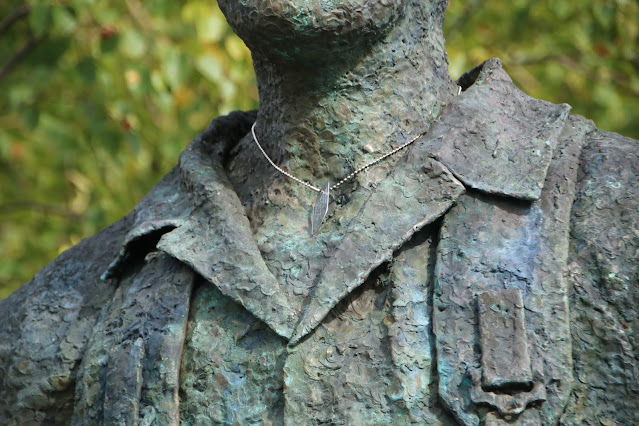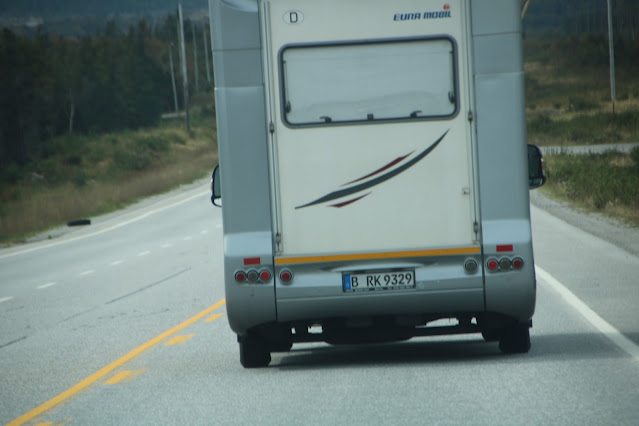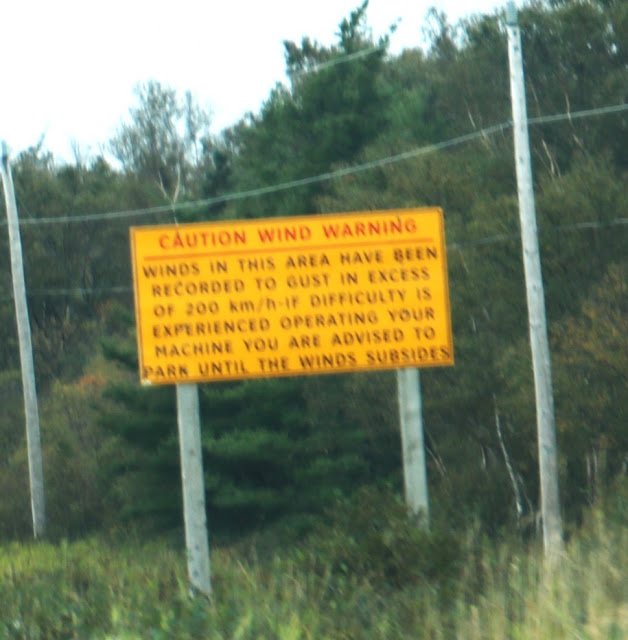Sep 26 St. John’s to Gander
Originally called Passage Harbour by John Guyin 1612, the name “Come By Chance” was first recorded in 1706, perhaps in reference to the discovery of the harbour “by chance.” Despite the presence of a telegraph station in the early 1900s, the settlement was almost deserted by the late 1930s.It was then chosen as the site of a cottage hospital because of its central location in the Trinity Bay-Placentia Bay area.
One night at the Quality Inn - nothing to write home about. Great staff though.
Another day of driving. The weather is still incredible low 20s (C).
Before we leave Gander we stop for some photos.
Steve Shields was commissioned to create a memorial in Gander near the crash site at the edge of the forest. Shields created the statues at his studio in Hopkinsville, cut them in sections, and transported them to Gander in July 1990. He reassembled the pieces on site.
Although our country was not subject to direct enemy attack during World War II, 6,395 of our servicemen gave their lives in Canada in the performance of their duties and now lie forever in the soil. With them rest many of their commonwealth brethren - a reminder to us that the rigors and dangers of battle are but part of the final price of victory. During the 1939-1945 war, air-reconnaissance planes and military defence forces were based at Gander, which was the headquarters of an anti-aircraft regiment of the Royal Canadian Army. Located 3.5 km east of Gander, the Commonwealth War Graves were set up near the airfield for the burials of casualties, mainly airmen who died in crashes in the area during the war. It contains 100 war graves. 94 of these graves are those of airmen, of whom 75 belonged to the Royal Canadian Air Force, 2 to the Royal Air Force, 2 to the Royal Australian Air Force, 5 to the Royal Air Force Ferry Command, 6 to the Royal Air Force Volunteer Reserve, and 4 to the British Overseas Airways Corporation. Of the 6 soldiers buried in the remaining graves, 5 belonged to the Royal Canadian Army and 1 to the British Army. Their graves, carefully marked and maintained in perpetuity, serve as a constant reminder to us of the ideals and sacrifices made by the men and women of Canada and the Commonwealth on our behalf.
In the early twenties Australian adventurous aviator, Sidney Cotton, was hired by the
Newfoundland colonial government to set up an aviation company operating out of
Botwood. He pioneered in delivering mail by air, using air planes to spot seals for the
sealing ships, and taking aerial photographs of timber land for the A.N.D. Co. He left in
1923 and went on to make a name for himself in aerial photography and as a WWII spy.
In 1928 the port was used to ship copper, lead, and zinc ore mined in Buchans; like the paper, it was delivered here by railway, stored in a huge shed and loaded by large wharf cranes.
In 1933, the famous American pilot, Charles Lindbergh and his wife, Anne, landed their seaplane in Botwood harbour to refuel. He was here for 4 hours, long enough to put Botwood on the map again and to recommend to the British and American governments and Pan American Airlines that Botwood would be an ideal place as a terminus for the developing transatlantic flights.
In 1937 the first experimental transatlantic flights went through Botwood much to the chagrin of competing big cities such as Halifax, Montreal and Toronto, and they proved to be a success. Infrastructure was put in place and in 1939 when regular passenger flights began Botwood became a familiar name on both sides of the Atlantic Ocean.
In 1935 the United States and British Governments chose Botwood as a landing base for their transatlantic flying boats. They reactivated Cotton's hangars, added facilities for refuelling, communications, weather observations and aircraft maintenance. On July 5, 1937 the first transatlantic experimental commercial flight, the Pan American Clipper III landed at Botwood from New York via Shediac, New Brunswick. The next day the Clipper III, a Sikorsky 42 aircraft piloted by Captain Harold Gray, left Botwood for Foynes, Ireland. The same day the Caledoinia, a Short Empire Class flying boat, under the command of Captain A. S. Wilcockson, left Foynes for Botwood. It landed July 6, 1937 at 7:36 am. This marked the beginning of transatlantic commercial flights.
On June 24, 1939 the Boeing B-314 Yankee Clipper (known as a flying boat) departed Port Washington, New York enroute to London, England via Shediac, New Brunswick, Botwood, Newfoundland, and Foynes, Ireland. The largest airplane of the day made a scheduled overnight stop at Botwood on June 27, 1939. The Yankee Clipper was a flying hotel. Her owner, Pan Am, fitted her out like a suite at the Ritz. Built to carry 74 passengers and a crew of 8, she had sleeping accommodations for 40, separate dressing rooms for men and women, and a well stocked bar She also had a lounge that doubled as a dining room, and a deluxe cabin in the tail section that converted into a bridal suite. Other elegant touches included a spiral staircase and soundproof compartments. The arrival and departure of this 109 foot flying giant in Botwood signified the end of two long years of test flights and the pioneer days of transatlantic air travel.
Overnight at Hew and Draw Hotel in Corner Brook, a great hotel. Large drinks were needed!
Sep 28 Corner Brook to PAB


.JPG)
.JPG)
.JPG)
.JPG)
.JPG)
.JPG)
.JPG)



























.jpg)
.JPG)
.JPG)
.JPG)
.JPG)

















Mr Moose looks like he/she enjoying it walk.
ReplyDeleteCoffee is on and stay safe
The Aviation Museum would draw me in. The memorial and war cemetery are poignant
ReplyDeleteA great trip! Oh, I wanna be on the road again - oh, wait, I just was ;-) Thanky to you.
ReplyDeleteTo fly like that.... crazy! And the moose, just on a slack walk! Sad about all the men who lost their lives for another stupid war.